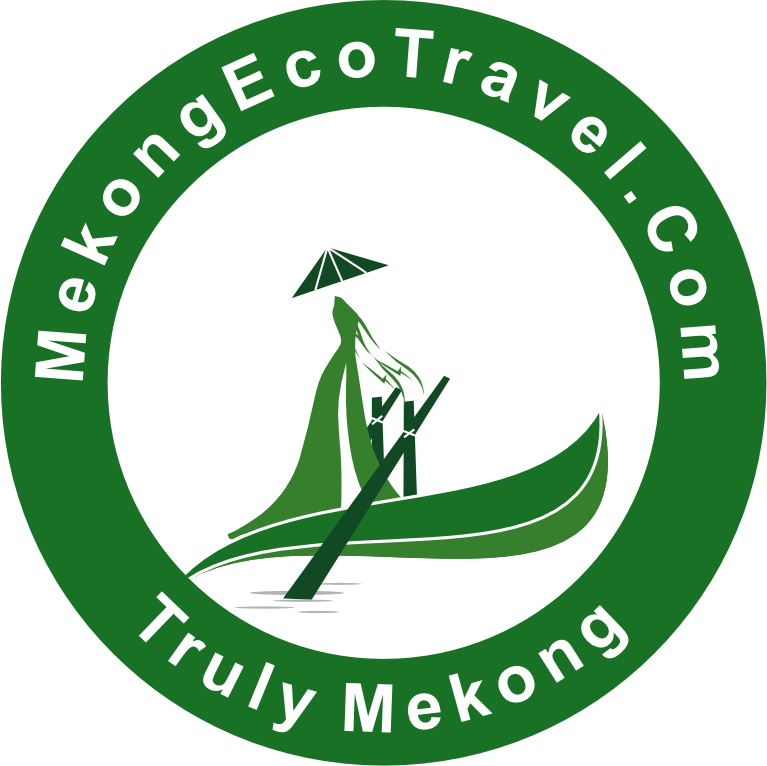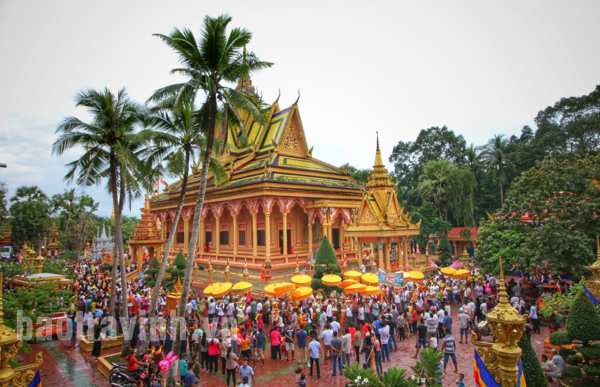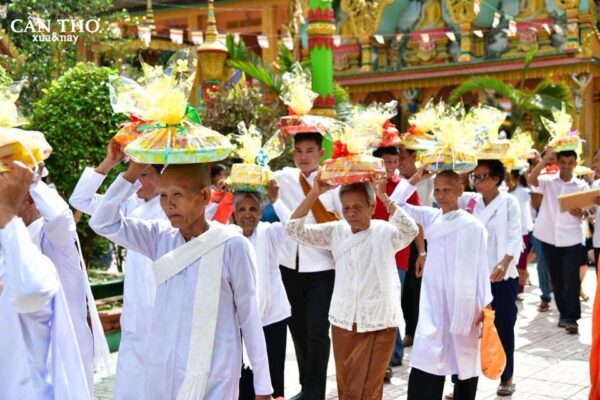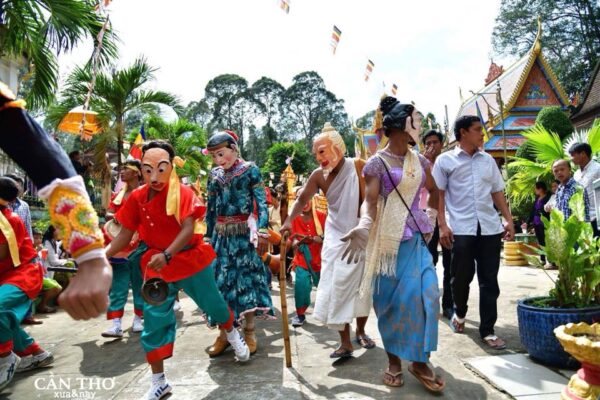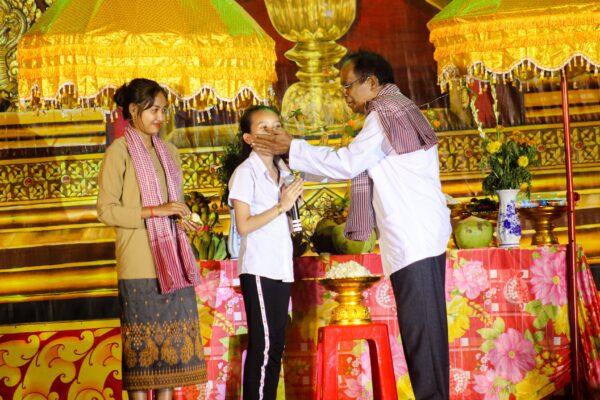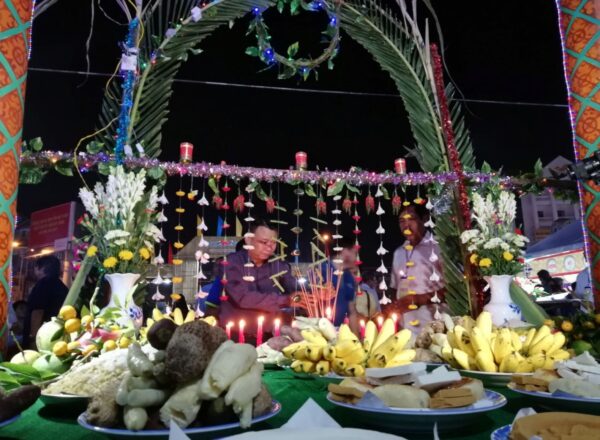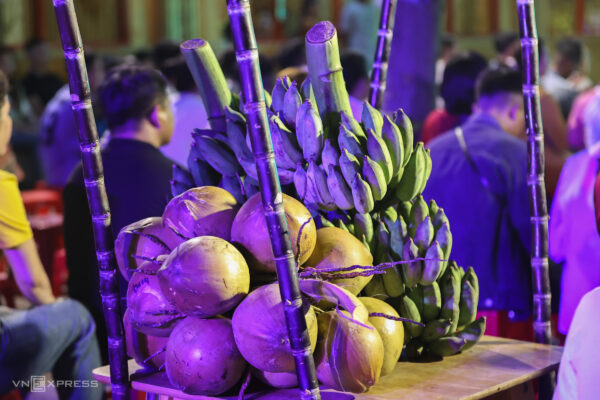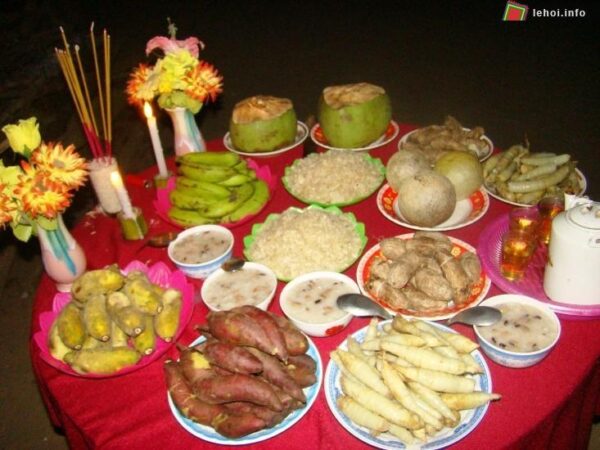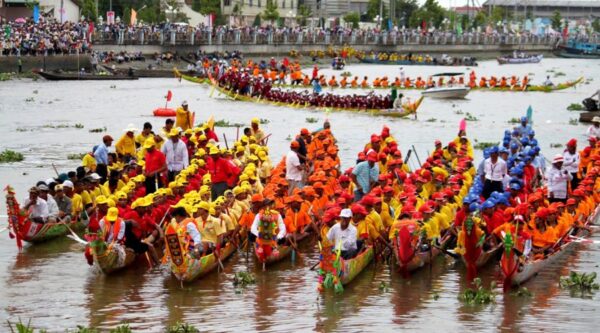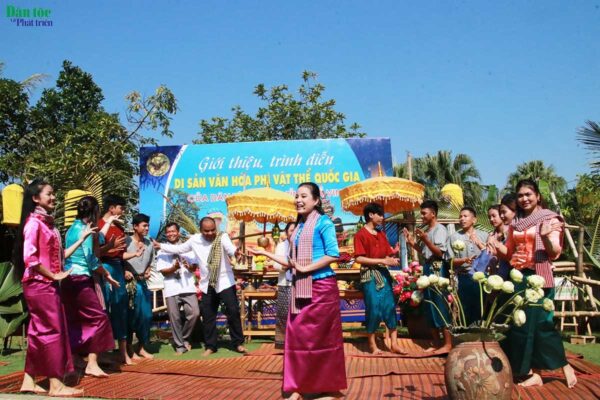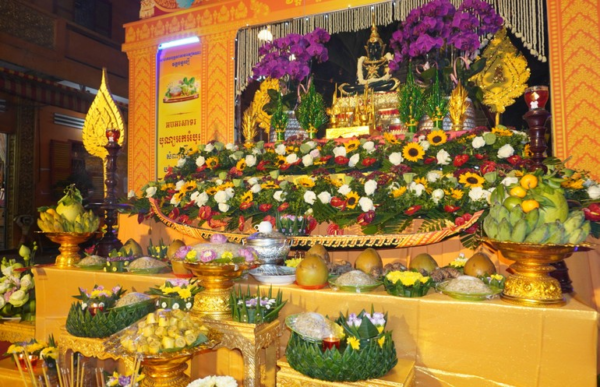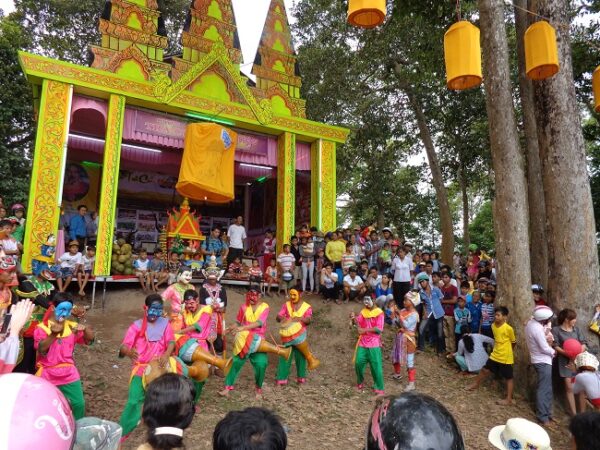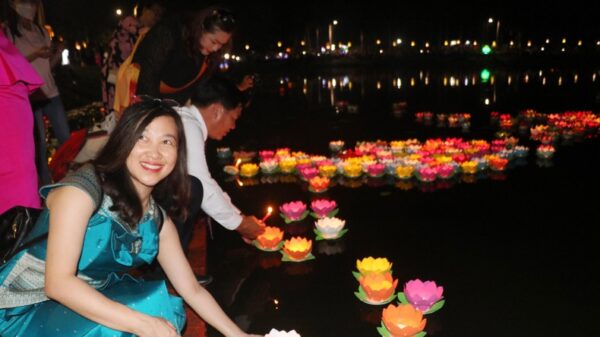THE CEREMONY OF THE OK OM BOK FESTIVAL
Ok Om Bok, or Moon worship ceremony, is a traditional festival held on the full moon day of the 10th lunar month every year. This is the time of transition from rainy season to dry season. It is one of the national intangible cultural heritages recognized by the Vietnam Ministry of Culture, Sports, and Tourism. This is a major folk festival that the Khmer people hold at the end of the harvest season to express gratitude to the Moon, the god who helps protect crops, regulate the weather, and bring good fruits and prosperity to the people according to the Khmer people’s beliefs. The festival is also an occasion for everyone to meet and talk with each other after hard working days in the field. In the past, to prepare for the festival, Khmer people often made a bamboo gate decorated with flowers and leaves. There are 12 rolled betel leaves symbolizing the 12 months of the year 7 split areca nuts representing 7 days of the week on the gate. Today, many Khmer people still keep this custom. Exploring the Ok Om Bok Festival in Soc Trang Like other festivals in Vietnam, the Ok Om Bok Festival in Soc Trang also has a ceremony and festival part. Let’s explore each part with MEKONGECOTRAVEL!
The ceremony of the Ok Om Bok Festival
The ceremony part of the Ok Om Bok Festival in Soc Trang includes Moon worship and the release of wind lanterns and water lanterns. The Moon worship is the main ritual in the festival, held on the full moon night of the tenth lunar month. This ceremony can be held by each household, or several households living next to each other in a village or hamlet. Local people will choose high, airy yards to be able to see the moon clearly. The Ok Om Bok Festival’s ceremony officially begins when the moon has just risen, shining light everywhere. The pagodas can also be the location to hold the festival. Everyone can join this ceremony regardless of their age or gender. In this ceremony, the host is the pillar of the family or a person of prestige in the community, who has the role of leading and operating the ceremony.
At the temple, Acha presided over the ceremony. At home, the oldest person will be responsible for this. They will pray to express the gratitude of the people to the Moon, asking the Moon to accept the offerings from local people and grant everyone good health, favorable weather, good harvests in the coming year, and a prosperous and happy life. The offerings often include flattened green rice (Com det), potatoes, and bananas. After finishing the offering, the celebrant gathers the children and asks what they wish for under the witness of the Moon. After the ceremony ends, lanterns made from cloth, bamboo strips, and tinder inside will be lit on fire and released into the sky. The local people send their wishes along the lanterns to the moon so that the Moon God can understand and respond to their wishes. Besides the sky lantern, the ceremony also has the ritual of releasing flower lanterns. At this time, the atmosphere becomes extremely crowded with the Chayyam dance team, the five-tone orchestra, monks, and villagers holding small lanterns walking along the river banks. At the end of the parade, everyone will release all the flower lanterns into the water, creating a magical and shimmering scene.
The festival part of the Ok Om Bok Festival While the ceremony part of the Ok Om Bok Festival is to express gratefulness to the Moon, the festival part is to see off and express gratitude to the Water god, who also contributes to the good harvest. Boat racing is one of the indispensable parts of the festival. This is not only a sports activity but also a chance for the villages and communes in the region to compete, showing solidarity. The long, colorfully decorated boats rush quickly on the water, creating a lively and joyful atmosphere. The boat races usually take place within 3 – 4 hours with the cheers and enthusiastic encouragement of many people watching the festival.
Besides the boat racing, the Ok Om Bok Festival also has professional performing arts activities, sports, fairs, and traditional folk performances, such as RoBam dancing, Khmer dancing, etc. Folk games are also organized, giving locals and tourists the opportunity to participate, have fun, and strengthen community cohesion.
